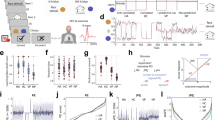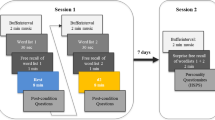Abstract
A NUMBER of studies have demonstrated that when humans are provided with exteroceptive feedback of specific aspects of cardiovascular performance, they rapidly learn to control responses of the system in question. Increases and decreases in heart rate1, decreases in heart rate variability2, and changes in vasomotor tone3 have all been demonstrated to be subject to control under conditions of augmented sensory feedback. The findings suggest that the use of augmented sensory feedback may be effective in the training of other aspects of cardiovascular behaviour. Such a technique would be particularly valuable in the training of blood pressure decreases in individuals exhibiting chronic essential hypertension. Recently Shapiro, Tursky, Gershon and Stern4 gave one group of subjects a brief signal whenever their systolic blood pressure exceeded a prescribed value and another group of subjects a brief signal whenever their blood pressures fell below a prescribed value. Using this procedure and making reinforcement depend on the appropriate response, these investigators were able to produce average increases and decreases in systolic blood pressure of about 1 and 5 mm Hg respectively in their two groups of subjects. If these general procedures could effect greater decreases in blood pressure, their potential therapeutic utility would be enhanced. Following the finding by Brener, Kleinman and Goesling5 that the degree of cardiovascular control is a direct function of the amount of augmented sensory feedback provided during training, we have attempted to maximize the amount of blood pressure information fed back to subjects within the constraints of the monitoring system used.
This is a preview of subscription content, access via your institution
Access options
Subscribe to this journal
Receive 51 print issues and online access
$199.00 per year
only $3.90 per issue
Buy this article
- Purchase on Springer Link
- Instant access to full article PDF
Prices may be subject to local taxes which are calculated during checkout
Similar content being viewed by others
References
Brener, J. M., and Hothersall, D., Psychophysiology, 3, 32 (1966).
Hnatiow, M., and Lang, P. J., Psychophysiology, 1, 330 (1965).
Lisina, M. I., in Razran, G., Psychol. Rev., 68, 81 (1961).
Shapiro, D., Tursky, B., Gershon, E., and Stern, M., Science, 163, 588 (1969).
Brener, J. M., Kleinman, R. A., and Goesling, W. J., Psychophysiology, 5, 510 (1969).
Hurst, J. W., and Logue, R. B., The Heart, 25 (McGrawHill, New York, 1966).
Author information
Authors and Affiliations
Rights and permissions
About this article
Cite this article
BRENER, J., KLEINMAN, R. Learned Control of Decreases in Systolic Blood Pressure. Nature 226, 1063–1064 (1970). https://doi.org/10.1038/2261063a0
Received:
Revised:
Issue Date:
DOI: https://doi.org/10.1038/2261063a0
Comments
By submitting a comment you agree to abide by our Terms and Community Guidelines. If you find something abusive or that does not comply with our terms or guidelines please flag it as inappropriate.



